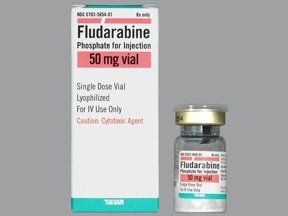This is an automatically translated article.
Non-Hodgkin lymphoma is a type of cancer that originates in cells of the immune and lymphatic systems, such as blood cells called lymph cells and lymph node tissues. So what is non-Hodgkin lymphoma (NHL)? What causes non-hodgkin lymphoma? The following article will provide essential information about non-hodgkin lymphoma.
1. What is Non-Hodgkin Lymphoma (NHL)?
Non-Hodgkin lymphoma (NHL) are tumors that originate in the lymphatic tissues, mainly the lymph nodes. These tumors can be caused by chromosomal translocations, infection, environmental factors, immunodeficiency, and chronic inflammation.
NHL is a term used for many different types of lymphoma, all of which share some characteristics. There is another major type of lymphoma, called Hodgkin lymphoma, which is treated differently.
NHL most commonly affects adults, but children can get it too.
NHL usually starts in the lymph nodes or other lymphatic tissues, but it can sometimes affect the skin.
Lymphoma affects the body's lymphatic system (also known as the lymphatic system). The lymphatic system is part of the immune system that helps fight infections and a number of other diseases. It also helps fluids move through the body.
Lymphomas can start anywhere on the body where lymph tissue is found. The main sites of lymphatic tissue are: lymph nodes, spleen, bone marrow, thymus, adenoids and tonsils, gastrointestinal tract.
2. Types of non-hodgkin lymphoma
Treatment for NHL depends on the type of cancer, so it's important for doctors to find out exactly what type of lymphoma you have. The type of lymphoma depends on the type of lymphocytes affected (B cells or T cells), how mature the cells are when they become cancerous, and other factors.
2.1. B- and T-cell lymphomas The lymphatic system is made up primarily of lymphocytes, a type of white blood cell that helps the body fight infections. There are 2 main types of lymphocytes:
B lymphocytes (B cells): B cells normally help defend the body against germs (bacteria or viruses) by making proteins called antibodies. The antibodies attach to the germs, marking them for destruction by other parts of the immune system. T lymphocytes (T cells): There are several types of T cells. Some T cells kill germs or abnormal cells in the body. Other T cells help boost or slow down the activity of other cells of the immune system. Lymphoma can start in one of two types of lymphocytes, but B-cell lymphoma is the most common.
2.2. Slow-growing and fast-growing lymphoma Types of NHL can also be grouped based on how quickly they grow and spread:
Non-Hodgkin's lymphoma is a type of lymphoma that grows It is slow and usually develops over months to years. Lymphomas are often considered incurable but they can be kept under control for many years Lymphomas that do not grow may also be called low-grade lymphoma and tend to have few signs and symptoms. symptoms than when first diagnosed. NHL droplet represents about 40 percent of all non-Hodgkin lymphomas. The median age of onset is usually around 60 years of age and can affect both men and women.
Most types of involuntary lymphoma include:
+ Follicular lymphoma (FL)
+ Skin T-cell lymphoma (CTCL)
+ Waldenstrom's Macroglobulinemia (WM)
+ Disease chronic lymphocytic leukemia (CLL) and small cell lymphoma (SLL)
+ marginal zone lymphoma (MZL)
Lymphoma can respond very well to treatment and long periods of remission can achieve. During remission, no active treatment is needed and most people get well during this time. Not all patients will need immediate treatment and be monitored for what is known as “watch and wait”.
Aggressive non-Hodgkin lymphoma is a fast-growing lymphoma and usually develops over weeks to months. Symptoms can develop quickly and treatment will need to begin soon after diagnosis. These lymphomas are potentially curable.
Malignant lymphoma is also known as high-grade lymphoma and about 60% of non-Hodgkin lymphoma is an aggressive subtype.
Most common types of aggressive lymphoma include:
+ Homologous large cell lymphoma
+ Burkitt lymphoma
+ Primary CNS lymphoma
+ Lymphoma Diffuse large B-cell lymphoma (DLBCL)
+ Mantle cell lymphoma (MCL)
+ Peripheral T-cell lymphoma (PTCL)
Most high-grade lymphomas respond very well to treatment and The patient remains in remission for a long time.
2.3. Classification of types of NHL There are different types of non-Hodgkin lymphoma (NHL), so categorizing it can be quite confusing (even for doctors). Several different systems have been used, but the most recent is the World Health Organization (WHO) classification. The WHO system groups lymphomas based on:
The type of lymphocyte in which the lymphoma begins in the lymphoma How the lymphoma looks under a microscope Chromosomal features of the lymphoma cells Presence of certain proteins on the surface of cancer cells
3. Causes of non-hodgkin' lymphoma
3.1. Changes in genes Scientists have made great progress in understanding how certain changes in DNA can cause normal lymphocytes to become lymphoma cells. Some of the gene changes that lead to certain types of lymphoma are now known. For example, in follicular lymphoma, cells often have an exchange of DNA (called a translocation) between chromosomes 14 and 18, which turns on the oncogene BCL-2. Chromosomes are long strands of DNA in each cell. This oncogene prevents cells from dying at the right time, which can lead to lymphoma.
3.2. Changes in the immune system Lymphocytes (cells from which lymphomas begin) are cells of the immune system, so it is not surprising that changes in the immune system seem to plays an important role in many cases of lymphoma:
People who are immunocompromised People with certain autoimmune diseases People with certain chronic infections.
4. Signs and Symptoms of Non-Hodgkin Lymphoma (NHL)
Non-Hodgkin lymphoma (NHL) can cause many different signs and symptoms, depending on the type of lymphoma and its location in the body. Sometimes it may not cause any symptoms until it has grown quite large.
Having one or more symptoms does not mean you definitely have lymphoma. In fact, many of the symptoms listed here are more likely to be caused by other conditions, such as infections. However, if you have any of these symptoms, see your doctor to find out the cause and get treatment if needed.
Some common signs and symptoms in many patients include: Enlarged lymph nodes, chills, weight loss, fatigue, abdominal pain, feeling full even after eating a small amount of food, pain or chest tightness, trouble breathing or coughing, severe infection, easy bruising or bleeding
Some people with non-Hodgkin lymphoma have what are known as B symptoms: Fever (which may appear and disappear) days or weeks) without infection, night sweats, unexplained weight loss, swollen lymph nodes.
5. Stages of Non-Hodgkin Lymphoma
After a patient is diagnosed with Non-Hodgkin Lymphoma, doctors will examine her to find out if it has spread, and if so, how far. This process is called stages. Cancer stage describes the extent of cancer in the body. It helps determine the severity of the cancer and the best treatment. .
Tests used to gather information for a diagnosis may include:
Physical exam Biopsy of enlarged lymph nodes or other abnormal areas Blood tests Imaging tests, such like PET and CT scans Bone marrow aspiration and biopsies (often but not always done) Lumbar puncture (spinal tap - may not be needed) Among them, the results of these tests Imaging tests such as PET or CT scans are most important when determining the stage of lymphoma.
The stages are described in Roman numerals I through IV (1-4). Limited stage (I or II) lymphomas affecting organs outside the lymphatic system (extratidal organs) have extra E (eg, stage IIE).
Stage I
One of the following means the disease is stage I:
Lymphoma is in only 1 lymph node region or a lymphoid organ such as the tonsils (I). Cancer is found in only 1 area of an organ outside the lymphatic system (IE). Stage II
Either of the following means the disease is stage II:
The lymphoma is in 2 or more groups of lymph nodes on the same side (above or below) the diaphragm (the thin band of muscle that separates the chest and belly). For example, this may include nodes in the underarm and neck region (II) but not a combination of the underarm and groin nodes (III). Lymphoma is located in a group of lymph node(s) and in an area of an adjacent organ (IIE). It can also affect other groups of lymph nodes on the same side of the diaphragm. Stage III
One of the following means the disease is stage III:
Lymphoma is located in the lymph node areas on both sides (above and below) the diaphragm. Lymphoma is located in the lymph nodes above the diaphragm, as well as in the spleen. Stage IV
Lymphoma has spread into at least one organ outside the lymphatic system, such as the bone marrow, liver, or lungs.
Bulky disease
This term is often used to describe large tumors in the chest. This is especially important for stage II lymphomas, as bulky disease may require more intensive treatment.
The stage of lymphoma is important when determining a person's treatment options, but it is more important for some types of lymphoma than others. For many of the more common types of NHL, treatment is in part based on whether the lymphoma is "limited" (stage I or stage II is not bulky) or "advanced" (stage III or IV). ). For stage II bulky lymphoma, several other factors (called prognostic factors) are used to help determine whether the lymphoma should be treated sparingly or progressing.
For some other types of NHL, such as fast-growing lymphomas such as Burkitt lymphoma, stage is less important when deciding on treatment.
Please dial HOTLINE for more information or register for an appointment HERE. Download MyVinmec app to make appointments faster and to manage your bookings easily.
References: emedicine.medscape.com, ancer.org, lymphoma.org.au













